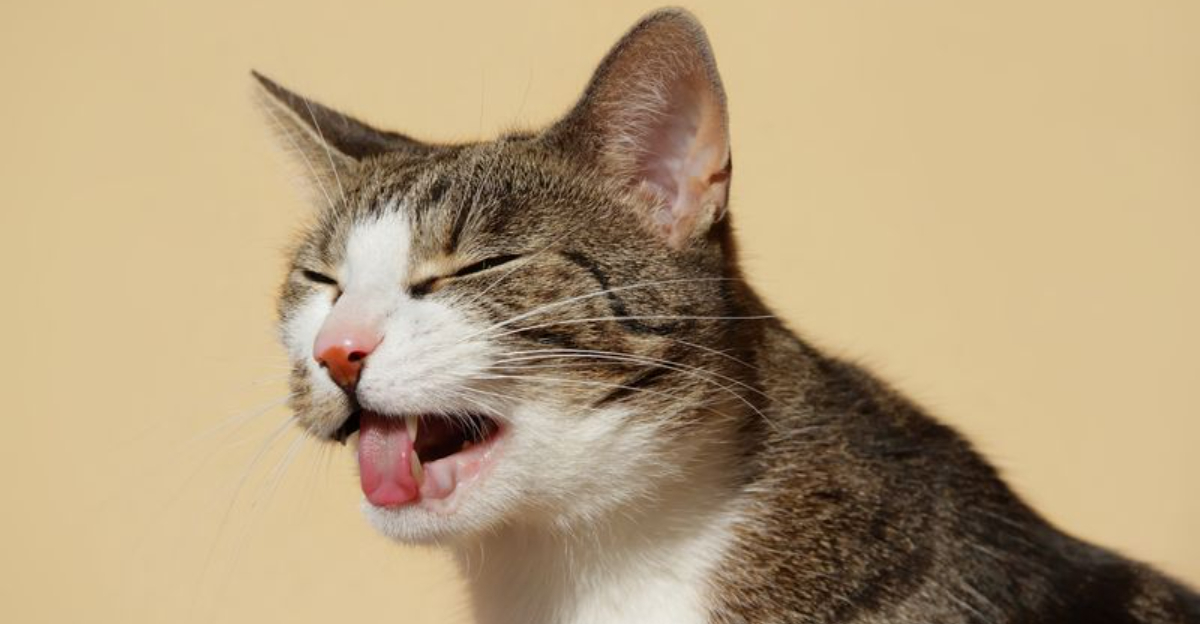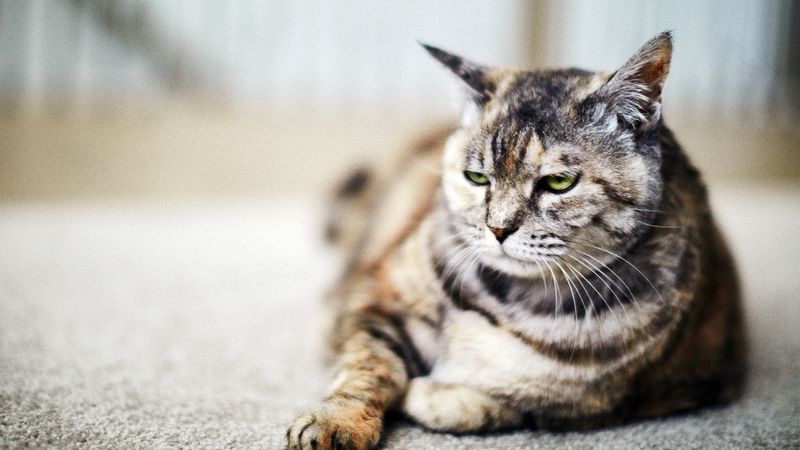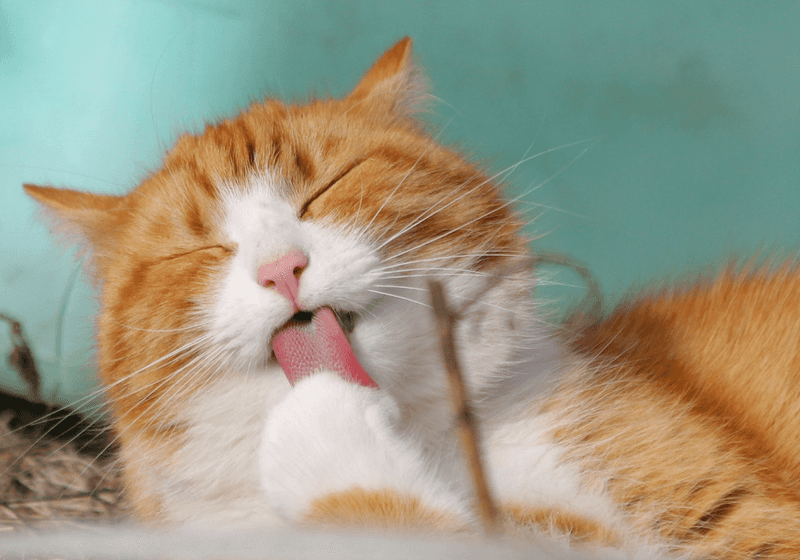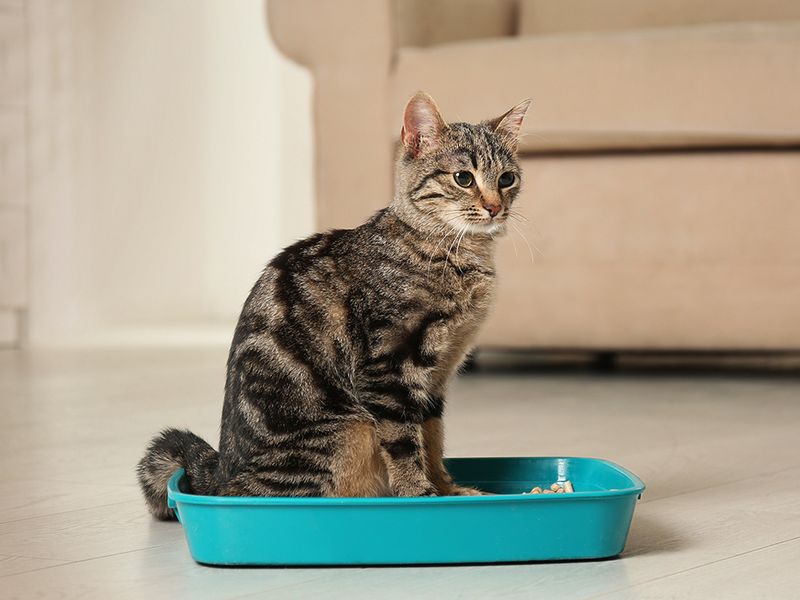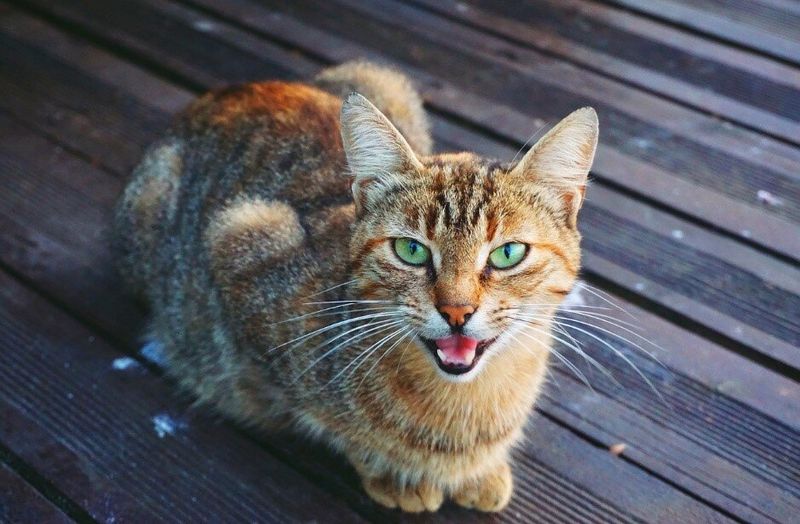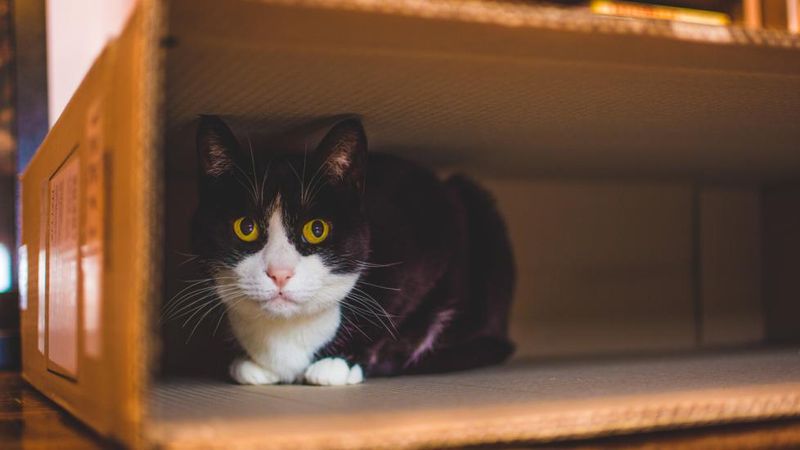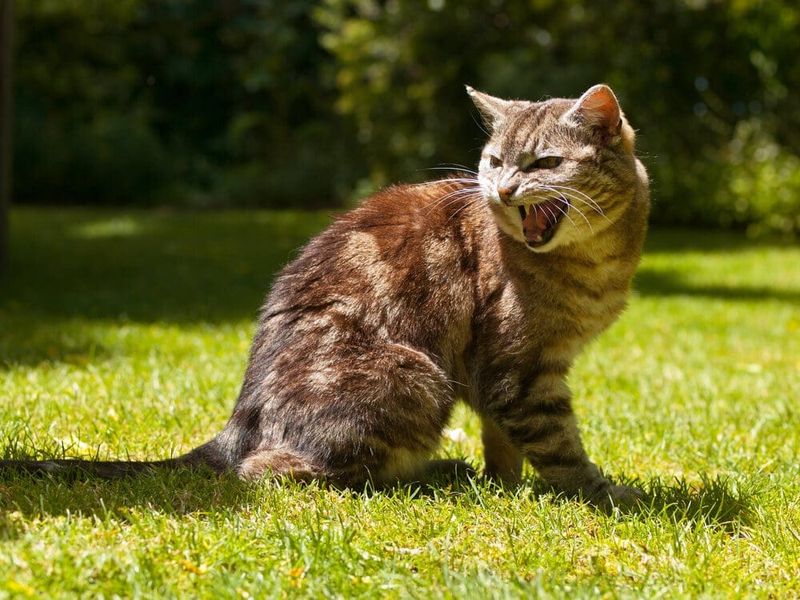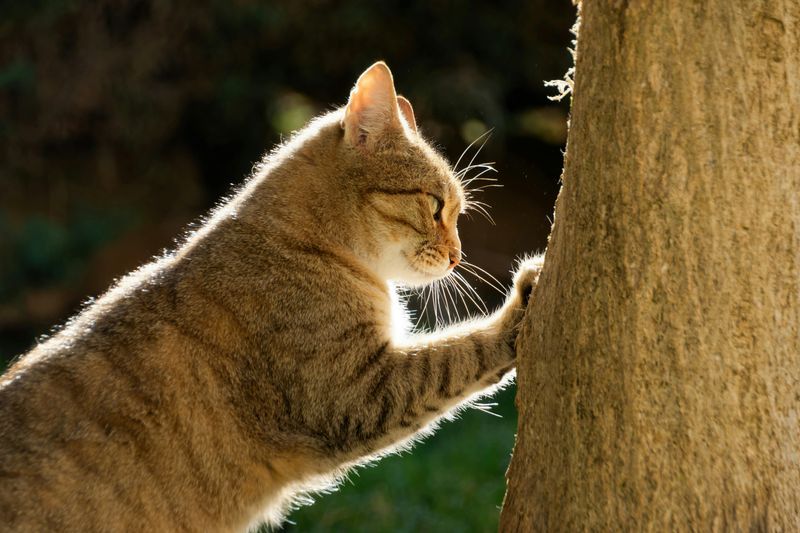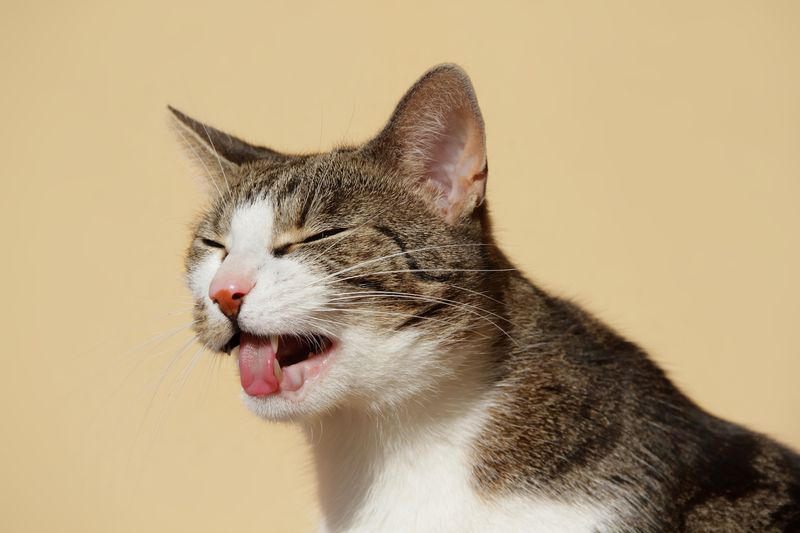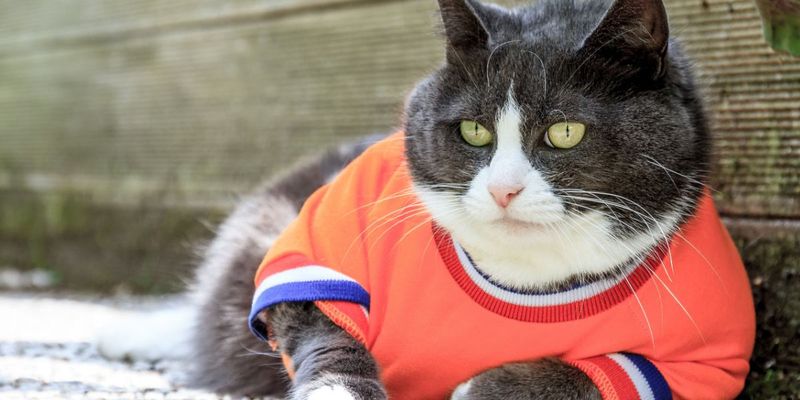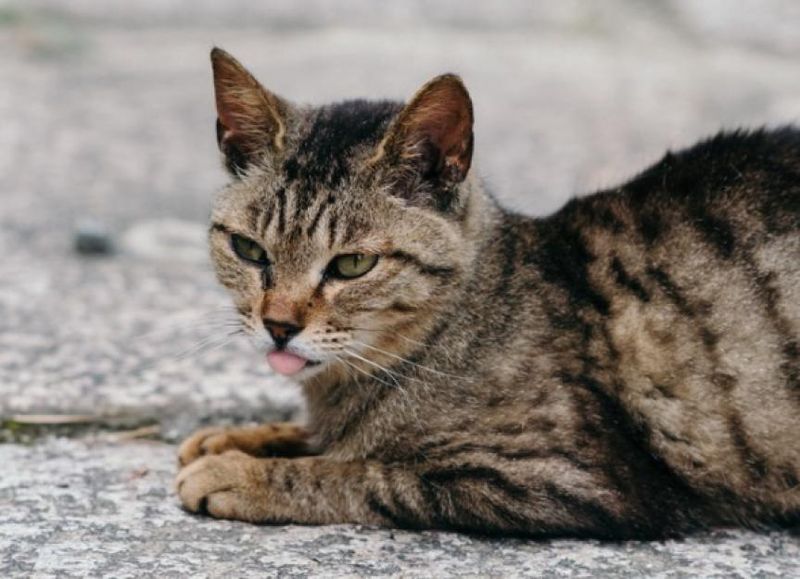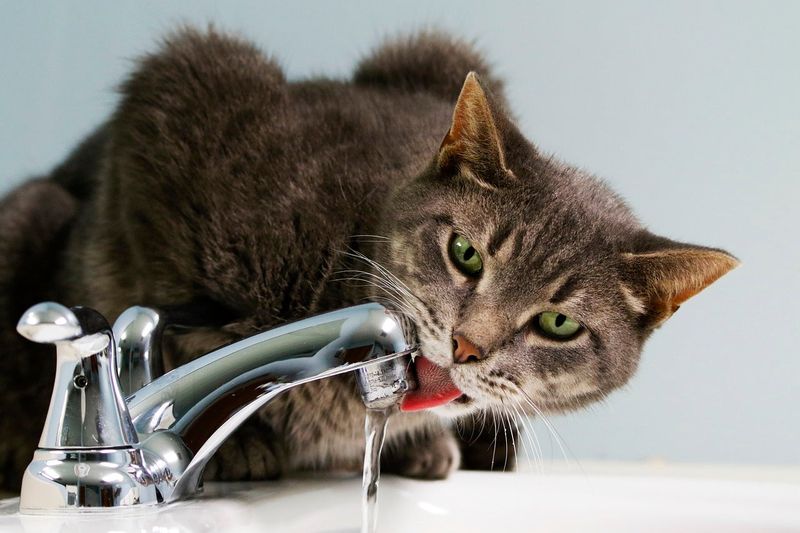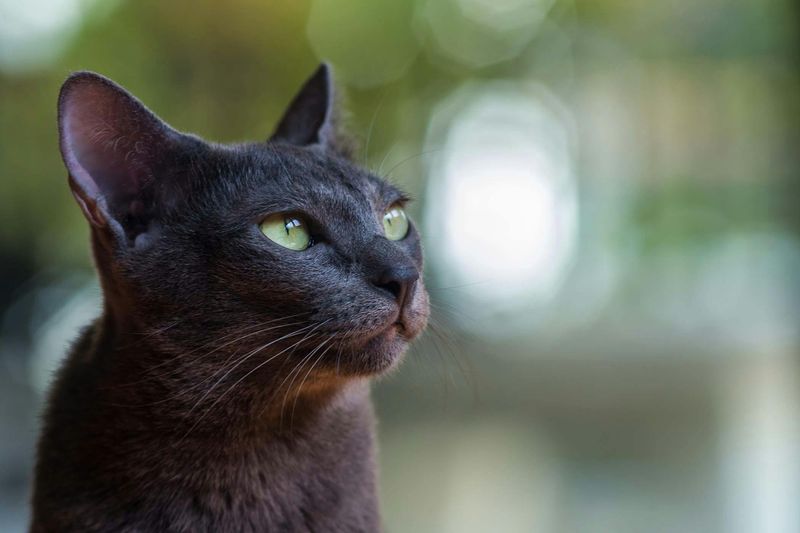📖 Table of Content:
- 1. Altered Eating Habits
- 2. Excessive Grooming
- 3. Litter Box Avoidance
- 4. Increased Vocalization
- 5. Withdrawal and Hiding
- 6. Aggression
- 7. Changes in Sleeping Patterns
- 8. Persistent Scratching
- 9. Vomiting and Hairballs
- 10. Unusual Weight Changes
- 11. Breathing Difficulties
- 12. Excessive Thirst
- 13. Sudden Changes in Vocalization
Cats are mysterious and independent animals, often leaving their owners to wonder what’s going on in their minds. Despite their aloof demeanor, certain behaviors can reveal a lot about their physical and emotional well-being. Being attentive to these signs can help ensure that any potential problems are addressed early.
Though cats are skilled at hiding discomfort, some actions or changes in behavior are impossible to ignore. Whether it’s a shift in their eating habits or a sudden change in their social interactions, these behaviors can provide important clues about their health. Understanding these signals can prevent serious issues from escalating.
Paying attention to your cat’s actions and habits is key to maintaining their well-being. Some behaviors, while subtle, may indicate pain, stress, or even illness. By keeping an eye on these telltale signs, it becomes easier to provide the care and attention your feline friend deserves.
1. Altered Eating Habits
A sudden change in your cat’s eating habits, like skipping meals or ravenous hunger, can indicate health problems. Cats are typically creatures of routine; thus, any deviation may signal an issue.
For instance, loss of appetite can be linked to dental pain or gastrointestinal distress. Conversely, increased food consumption might relate to conditions like hyperthyroidism or diabetes. If you notice these changes, a vet visit is prudent.
Observing your cat’s food bowl can tell you a lot. If those whiskers aren’t twitching with interest at mealtime, it might be time to investigate further.
2. Excessive Grooming
While grooming is a natural behavior, excessive licking can lead to bald patches and skin irritations. Cats often over-groom due to stress, allergies, or external parasites.
You might notice them focusing on one spot, leading to raw skin or sores. Pay attention to these grooming sessions; they’re your cat’s way of showing discomfort.
Consider any recent changes in their environment. New pets, moving, or changes in routine can stress your cat, manifesting in this grooming behavior. Observing and adjusting their environment can provide relief.
3. Litter Box Avoidance
When your cat starts avoiding the litter box, it’s waving a red flag. This behavior could stem from medical issues like urinary tract infections or arthritis.
Cats associate pain with the litter box, hence avoiding it. Alternatively, a dirty or unappealing litter box can be the culprit.
Ensure the litter is clean and in a quiet, accessible location. If the problem persists, a vet check-up is necessary to rule out health concerns. Keep an eye on the cat’s body language for more clues.
4. Increased Vocalization
Cats communicate through vocalization, but excessive meowing, especially if sudden, can imply discomfort. It might be their way of expressing pain, hunger, or anxiety.
Senior cats often develop cognitive dysfunction, leading to increased vocalization. If your feline friend becomes unusually chatty, consider their age and recent changes.
Spend time observing the context of these meows. Sometimes, a simple environmental change can provide comfort. However, prolonged vocal issues warrant a professional’s opinion to ensure their well-being.
5. Withdrawal and Hiding
A sudden desire for solitude in a typically inquisitive cat is a behavior that shouldn’t be ignored. It could indicate stress, illness, or even fear.
Look for changes in their environment that could trigger anxiety. New household members or loud noises can send them into hiding.
Offering safe spaces and minimizing stressors can coax them back out. If withdrawal persists, consult your vet to ensure it’s not a sign of health issues.
6. Aggression
If a cat suddenly displays aggression, it’s important to consider underlying reasons. Pain, fear, and territorial disputes are some of the most common causes.
If your friendly feline turns fierce, consider recent changes in their surroundings or interactions with other pets.
Pain from unnoticed injuries or health issues can also trigger such behavior. Approach with care and consult a vet to address underlying issues. Observing your cat’s triggers can help manage and prevent these aggressive outbursts.
7. Changes in Sleeping Patterns
Cats cherish their sleep, often curling up for long naps. However, sudden changes in their sleeping pattern, such as increased restlessness or lethargy, could signal a problem.
Disrupted sleep might be due to discomfort, anxiety, or cognitive dysfunction in older cats. Keeping track of their sleep habits can offer insights into their health.
A comfortable sleeping environment and regular vet check-ups will ensure your feline’s dreams remain sweet. Remember, a change in sleep is a cue to check their overall well-being.
8. Persistent Scratching
An obsession with scratching could be your cat’s way of telling you something is wrong. Whether it’s anxiety, a flea issue, or a skin condition, it’s worth investigating the cause.
Providing dedicated scratching posts can redirect this behavior. Observing where and when your cat scratches can also offer clues.
If scratching is harming your furniture or their paws, investigate further. It’s essential to understand your cat’s needs and provide appropriate outlets for their energy and instincts.
9. Vomiting and Hairballs
Occasional hairballs are normal, but frequent vomiting can be a sign of digestive issues. If your cat is regularly bringing up hairballs or vomiting, it’s time to assess their diet or grooming habits.
Long-haired breeds are more prone to hairballs, so regular grooming can help reduce this occurrence. Persistent vomiting, however, requires a vet’s attention to rule out serious conditions.
Monitoring your cat’s feeding and grooming routines can help maintain their digestive health.
10. Unusual Weight Changes
Fluctuations in your cat’s weight, whether gain or loss, can indicate underlying health problems. Significant weight loss may point to hyperthyroidism, diabetes, or gastrointestinal issues, while weight gain might suggest overeating or a lack of exercise.
Monitor your cat’s diet and activity levels regularly. Regular vet check-ups are crucial for maintaining a healthy weight.
Tracking these changes ensures your feline stays fit and active, preventing long-term health complications.
11. Breathing Difficulties
Quiet breathing is a cat’s signature, so when their breath becomes labored or rapid, it shouldn’t be ignored. Open-mouth breathing and wheezing could be signs of underlying respiratory or heart issues.
Observe your cat’s breathing in different environments to identify triggers. Allergies, asthma, or infections might be the cause.
Immediate veterinary attention is needed to diagnose and treat the issue. Keeping an eye on their breathing helps ensure their vitality and comfort.
12. Excessive Thirst
Increased thirst in cats can be a symptom of health issues like kidney disease or diabetes. If your feline friend is drinking more than usual, it’s worth investigating.
Track their water consumption and note any other behavioral changes. Consulting with a vet will help determine if this change is significant.
Providing fresh water and monitoring intake ensures your cat remains hydrated and healthy. This vigilance in tracking habits keeps you informed of their well-being.
13. Sudden Changes in Vocalization
An abrupt change in your cat’s typical vocal patterns can hint at discomfort or distress. Whether it’s a new pitch, frequency, or volume, these vocal changes are worth noting.
Consider any recent changes in their environment or routine that could be causing anxiety or discomfort.
Understanding these vocal cues can guide you in providing comfort and care. Consulting a vet can offer peace of mind, ensuring your cat’s happiness and health are prioritized.
